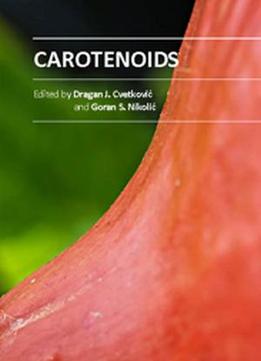
Carotenoids Ed. By Dragan J. Cvetkovic And Goran S. Nikolic
by Dragan J. Cvetkovic /
2017 / English / PDF
291.8 MB Download
This volume is dedicated to Carotenoids - one of the most widespread pigment groups distributed in nature; more than 700 natural carotenoids have been described so far. These pigments are known for versatile roles they play in living organisms; however, their most pivotal function is involvement in scavenging of reactive oxygen species and photoprotection.
In the same time, carotenoids as natural pigments with important biological activities, such as antioxidant and provitamin A activity, have a great potential in the food, feed and pharmaceutical industries. They can be either extracted from plants and algae or synthesized by various microorganisms, including bacteria, yeasts, filamentous fungi and microalgae.
1 Characterisation of Carotenoids Involved in the Xanthophyll Cycle
2 Electronic Structure of Carotenoids in Natural and Artificial Photosynthesis
3 Localizing and Quantifying Carotenoids in Intact Cells and Tissues
4 The Biochemistry and Antioxidant Properties of Carotenoids
5 β‐Carotene and Free Radical Reactions with Nitrogen Oxides
6 Influence of Environmental Stress toward Carotenogenesis Regulatory Mechanism through In Vitro Model System
7 Carotenoids Regulate Endothelial Functions and Reduce the Risk of Cardiovascular Disease
8 Biotechnological Production of Carotenoids and Their Applications in Food and Pharmaceutical Products
9 Synthesis of Antioxidant Carotenoids in Microalgae in Response to Physiological Stress
10 Carotenoid Production by Corynebacterium: The Workhorse of Industrial Amino Acid Production as Host for Production of a Broad Spectrum of C40 and C50 Carotenoids
11 Carotenoids in Yellow Sweet Potatoes, Pumpkins and Yellow Sweet Cassava
12 Carotenoids in Cassava Roots











